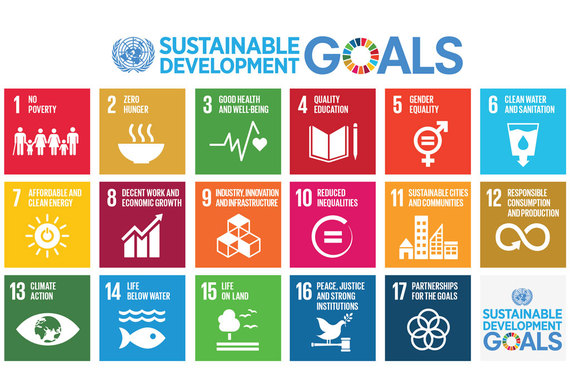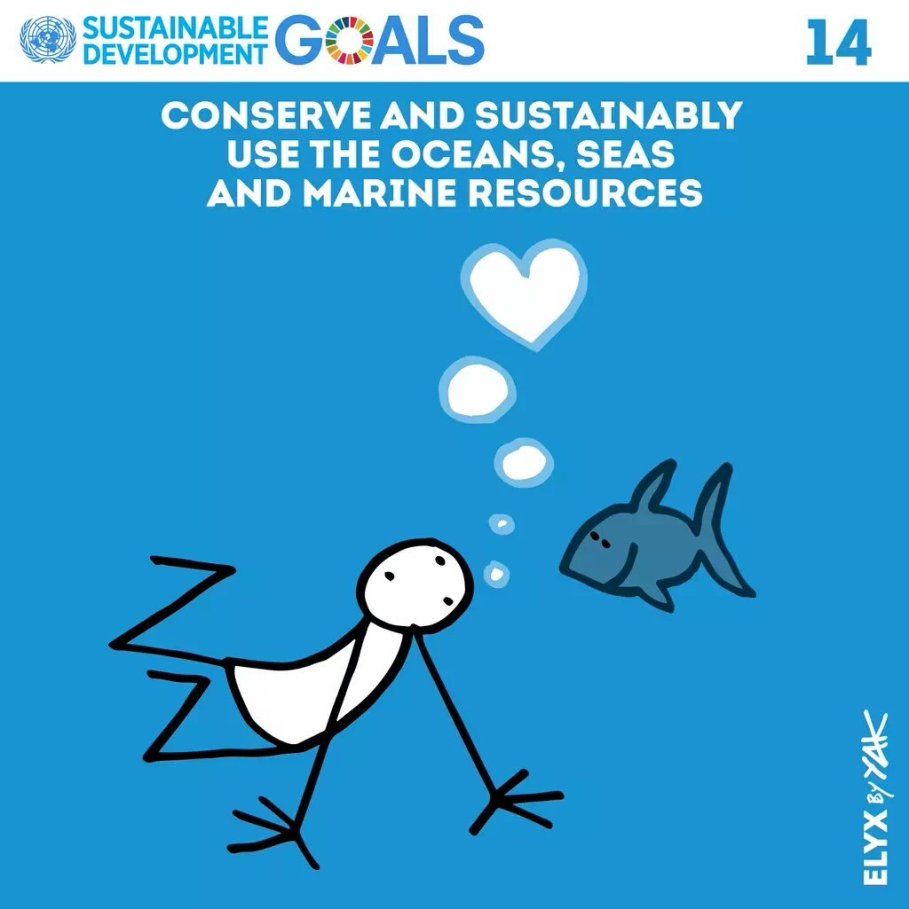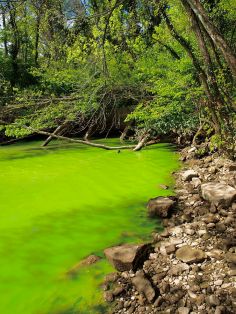What are the Sustainable Development Goals?
The Sustainable Development Goals (SDGs) are an intergovernmental set of aspiration Goals with 169 targets. The Official Agenda for Sustainable Development outlined 17 Sustainable Development Goals and its associated 169 targets to be achieved by 2030. It all started when I recently attended the Mary Robinson SDG Symposium in Ballina, County Mayo. This covered detailed discussions of SDG 5- Gender Equality, SDG 10- Reducing Inequalities and SDG 16- Peace. For the first time the UN has included a Sustainable Development Goal about the oceans in its new sustainable development agenda. We have a very special interview from Andrew Hudson, Head of Water & Ocean Governance, UNDP about the Sustainable Development Goal 14 on the oceans (Life below Water) and Sustainable Development Goal 6 on water (Clean water and sanitation).

1) Why are the oceans important to our planet and what are the main threats or challenges affecting it?
Andrew Hudson: “The oceans cover over 70% of the planet and represent over 99% of the earth’s living space. They provide food security for billions, are the major transport hub on earth for traded goods (via shipping), are probably the single most sought after tourism amenity, produce half the world’s oxygen. Oceans are the major regulator of the earth’s climate through their absorption and release of heat energy, absorbing some 87% of the extra energy that greenhouse gases create in the atmosphere and 30% of the anthropogenic CO2 we emit. The ocean economy – shipping, fishing, aquaculture, oil and gas extraction, tourism – is valued at several trillion dollars per year, and that is only for the marketized benefits, it doesn’t include the immense non-market benefits the ocean provides such as climate regulation.
The principal five threats to a sustainable oceans are: overfishing, coastal habitat loss (corals, seagrass, mangroves, etc.), pollution (especially by nutrients and plastics), invasive species (especially those carried in ship’s ballast water and on hulls) and ocean acidification (since the 30% of anthropogenic CO2 that dissolves in oceans creates carbonic acid, lowering the pH/increasing the acidity of the oceans).”
2) For the first time the UN has included a Sustainable Development Goal about the oceans in its new sustainable development agenda. What are the SDGs and in particular Goal 14: Life below water and Goal 6: Water?
Andrew Hudson: “SDGs 6 (water) and 14 (oceans) are in many ways complementary. SDG6 sets ambitious targets such as universal access to clean water and sanitation services, dramatically increasing the treatment of wastewater, improving water use efficiency, and protecting freshwater ecosystems. SDG6 and 14 calls for reducing marine pollution, protecting coastal ecosystems, ending overfishing including elimination of destructive fisheries subsidies, achieving 10% of the oceans under marine protected areas, improving resource and market access for small scale fishers, and enhancing ocean economic benefits to the poorest people and those who live in Small Island Developing States (SIDS).”
 3) What is the role of the UNDP Ocean Governance programme in implementing the SDGs Goals 6 and 14?
3) What is the role of the UNDP Ocean Governance programme in implementing the SDGs Goals 6 and 14?
Andrew Hudson: “Through its Ocean Governance Programme, UNDP is working with other UN agencies, the Global Environment Facility, international financial institutions, regional fisheries organizations and others to improve ocean management and to sustain livelihoods at the local, national, regional and global scales through effective ocean governance. UNDP’s Ocean Governance Programme is strongly aligned with Sustainable Development Goal (SDG) 14 on Oceans – Conserve and sustainably use the oceans, seas and marine resources for sustainable development. The active portfolio and pipeline of UNDP projects and programmes support the majority of SDG14 targets. We support the creation of an enabling policy environment for ocean restoration and protection through the development of ocean and coastal management strategic planning tools and methodologies. We support the codification and application of the Global Environment Facility’s (GEF) Transboundary Diagnostic Analysis/Strategic Action Programme planning approach to address aquatic ecosystem degradation at the scale of Large Marine Ecosystems (LME). We also promote bottom-up approaches to maintaining aquatic ecosystem services at smaller planning scales (municipalities, provinces, local watersheds) – Integrated Coastal Management (ICM) and Integrated Water Resources Management (IWRM). We help build upon and advance existing or anticipated regional or global multilateral agreements to address threats to large-scale ocean sustainability such as from shipping and highly migratory tuna stocks. We support countries in the creation of new Marine Protected Areas (MPA) and the strengthening of existing MPAs through the UNDP Ecosystems and Biodiversity programme.”
“UNDP helps countries achieve integrated, climate resilient, sustainable and equitable management of water resources through long-term and comprehensive partnerships and universal access to safe water supply and sanitation through improved water governance. UNDP’s water programme is strongly aligned with Sustainable Development Goal 6 on ensuring availability and sustainable management of water and sanitation for all as well as the relevant dimensions of all the other goals. We provide strategic water governance policy and technical advisory support to low- and middle-income countries to advance socially equitable, environmentally sustainable and economically efficient management of water resources and water and sanitation services. We support capacity development in sustainable water management through Cap-Net, an important delivery mechanism. Cap-Net supports capacity development related to integrated water resources management, transboundary waters, water supply and sanitation, gender equality, water integrity and climate change adaptation through promoting South-South collaboration and the exchange of water reform experiences and good practices. We promote upstream work on accountability in water, sanitation and hygiene programming to enhance the sustainability of interventions through the UNDP GoAL-WaSH programme. And we foster strategic partnerships, including with the private sector, to improve water supply and sanitation and to promote responsible water resources management.”
4) What types of marine pollution are there and how can we help to reduce pollution?
Andrew Hudson: “There are a wide range of types of marine pollution, from persistent toxic substances to nutrients to metals such as mercury to plastics. I will focus on nutrient pollution as one of the most pressing issues facing ocean sustainability. When supplied in limited quantities, nutrients (nitrogen, phosphorus) support the growth of marine phytoplankton which serve as the base of the marine food chain. However, when excess nutrients are introduced to marine ecosystems, such as from agricultural run-off (fertilizers, manure) and untreated wastewater, this can lead to plankton ‘blooms’ and a process known as eutrophication, when the excess plankton die, sink to the bottom, consuming much or all of the oxygen in the process, leading to low oxygen water or ‘hypoxia’. Since pre-industrial times, the burden of nitrogen carried from the continents to the world ocean has roughly tripled; this has driven a massive increase in the occurrence of hypoxic zones around the world, now numbering well over 500 and costing the global economy an estimated $200-800 billion per year. Nutrient over-enrichment is one of a handful of ‘planetary boundaries’ that are already considered to be exceeded, with calls for a 70% reduction in the level of reactive nitrogen that is presently reaching our ocean to return within the boundary. A global paradigm shift is required in how we manage nutrients if we are to slow down and ultimately reverse the hypoxia trend. Municipalities, countries and regional river basin and ocean management bodies, through regional ocean strategic planning and local and national ICM approaches, can apply a number of existing policy, economic and financial tools to internalise the nutrient externality and reduce nutrient burdens to their coastal areas, including:
- Nutrient emission taxes on point sources (WWTP, industrial sources);
- Regional and national catchment level nutrient management plans and budgets;
- Subsidies to promote good nutrient management practices and technology;
- Nutrient emissions cap and trade system for national and/or international river basins;
- Feed-in tariffs to incentivise fertiliser recovery from nutrient waste (human, livestock);
- National regulations that reduce nutrient pollution through improved practices (caps on fertiliser/ha, agriculture buffer zones, manure management requirements, etc.);
- Strengthen nutrient management institutional capacity at local, national, regional, global scales.”

5) Ocean acidification is a major threat of climate change, affecting seabed habitats such as coral reefs and calcifying organisms in the oceans. How can we reduce the threat of ocean acidification?
Andrew Hudson: “The oceans absorb 25-30% of the anthropogenic CO2 we emit; this huge extra CO2 being added to the oceans are causing them to acidify at the fastest rate in at least 30 million years; this has serious consequences for the numerous organisms that fix calcium carbonate in their shells and other structures, from the smallest plankton to corals to larger shellfish. Plus, a more acidic ocean impacts fish and other species by directing more of their energy into fighting the increased acidity at the expense of growth, feeding, reproduction etc. The solution to slowing and ultimately reducing ocean acidification is the same as for addressing climate change: we must dramatically reduce anthropogenic emissions of carbon dioxide, moving towards a much lower emission carbon economy in the coming years. The recent Paris Agreement is an important step in this direction but countries need to make, and keep, their commitments to GHG emissions reduction. Technological innovation is making an important contribution to the mitigation of climate change and ocean acidification, as various renewable energy technologies such as solar and wind become more and more cost competitive with fossil fuel energy sources. However, the playing field remains far from level as the fossil fuel industry benefits from trillions in subsidies. The view of most of the world’s top economists is that the most efficient way to accelerate the needed transition to a low carbon economy would be to put a price on carbon via a (revenue neutral) carbon tax. This has for example been successfully piloted in a handful of locations such as British Columbia but may not be politically feasible in many areas.”
6) Overfishing is a global phenomenon and how can governments make better policies to protect the fisheries?
Andrew Hudson: “Some 80% of the world’s fish stocks are overexploited or fully exploited; FAO/World Bank study estimated the the economic costs of this management failure at $50 billion per year. Recent reconstructions of official reported and unreported fisheries catch data (Pauly and Zeller, 2016) suggest that wild fish catch may have actually peaked in 1996 and has declined since then. A number of policy, regulatory and market reforms are required, at global, regional and national levels, to move the world’s fisheries on a path towards sustainability. These include:
a) Reducing and ultimately eliminating negative subsidies to the wild catch industry;
b) Scaling up marine protected areas to protect and expand key habitat required for fish stock life cycles;
c) Strengthening Regional Fisheries Management Organizations and LME institutions with responsibility for management of fish stocks, including:
- Ecosystem-based approaches;
- Monitoring and enforcement;
- Eliminating destructive fishing practices;
- Scaling up sustainable aquaculture;
- Scaling up application of innovative economic instruments for wild fisheries management such as rights-based approaches (taking into account the rights and needs of small scale fishers).”
7) Small island states are disproportionately affected by climate change- what steps do the SDGs make to reducing this impact?
Andrew Hudson: “Yes, many SIDS are low lying with average heights above sea level as low as 1-2 meters such as Maldives and Kiribati so face existential threats from continued climate change driven sea level rise. Most SIDS are tropical and have high dependence (livelihoods, food security, tourism) on coral reefs which are multiply threatened by climate change – coral bleaching (due to warming) and ocean acidification. There is also some evidence that climate change is or will increase the frequency and/or intensity of intense weather events such as cyclones/hurricanes and many SIDs lie in the path of such storms. With few exceptions, the economies of most SIDS are dominated by tourism and/or fisheries. Most SIDS are heavily reliant on fossil fuel imports (such as diesel oil) and have limited experience with renewable energy sources. The SDGs recognized the special situation of SIDS vis a vis their isolation, limited capacity, often least developed status, by including targets specific to SIDS including:
Oceans 14.7 By 2030, increase the economic benefits to small island developing states and least developed countries from the sustainable use of marine resources, including through sustainable management of fisheries, aquaculture and tourism, and
Energy Access 7.b. By 2030, expand infrastructure and upgrade technology for supplying modern and sustainable energy services for all in developing countries, in particular least developed countries and small island developing states.”
Acknowledgements
A big thank you to Andrew Hudson for taking part in this interview and answering the questions about the Sustainable Development Goals. The interview has covered many important issues affecting the management of the oceans today. It has highlighted the range of issues on which which we need to act with urgency in order to achieve these goals in the coming years.
References
SDG Goal 14 Knowledge platform
Pauly D, & Zeller D (2016). Catch reconstructions reveal that global marine fisheries catches are higher than reported and declining. Nature communications, 7 PMID: 26784963

It is high time that globally we should learn to respect ocean/marine world!!!!